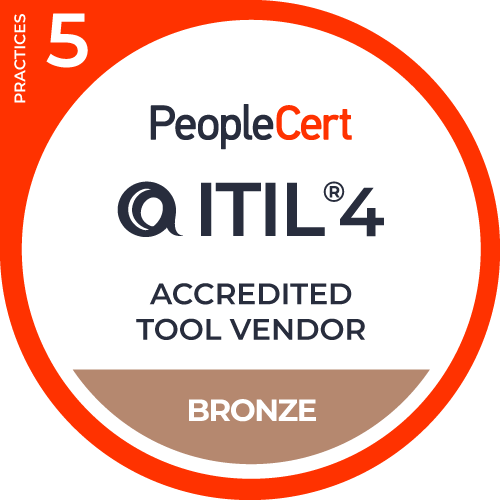The COVID-19 crisis has brought new ways of working to many employees, with them now confined to their homes. Likely using more technology – to get their work done – than ever. The crisis has also impacted how IT organizations work. In particular, being able to support the large increase in homeworkers. From the additional equipment and new IT solutions that have been required to the refocusing of IT support on the key employee issues such as the lack of connectivity impacting their productivity (while working from home). Plus, of course, your organization’s IT employees aren’t immune to the need to stay at, and work from, home either – with the ramifications this brings.
But this is just the IT-organization view. What about other business functions such as human resources (HR), facilities, and procurement? Not least the fact that what have traditionally been office-based teams are now trying to do what they’ve always collectively done, in an office, individually from home.
To help, this blog looks at a readymade solution to many of the issues that have been accentuated by the COVID-19 crisis – the adoption of enterprise service management principles and the associated technology.
The opportunity of enterprise service management
Enterprise service management – the use of IT service management (ITSM) thinking, best practices, and technology to improve the operations and outcomes of other business functions – was already a popular ITSM trend pre-crisis.
However, the impact of the crisis – in particular, the need to effectively serve and support the potentially huge increase in homeworking employees – has brought the opportunity of, and need for, enterprise service management to the fore.
For some organizations, this will be viewed as the adoption and execution of an enterprise service management strategy. For others, it’ll be seen as a back-office transformation as part of a wider digital transformation initiative. The naming isn’t important. What is, however, is the understanding of how enterprise service management will help most business functions to be better versions of themselves for the benefit of the employees they serve and the organization as a whole.
FREE Enterprise Service Management CourseElevate customer satisfaction and optimize organizational performance. |
Achieving the benefits of enterprise service management
As already mentioned, enterprise service management is very much about improving the operations and outcomes of other business functions through the sharing of ITSM best practices and technology. This is often replacing ad hoc, manual business function operations with consistent, automated workflows that better serve employees and, potentially, external customers. Often elevating the business functions from operational practices that are stuck in emails and spreadsheets to technology-enabled workflows that deliver superior service experiences.
Example ITSM capabilities that can be shared through enterprise service management include:
- Best practices for the handling of requests for help, service, and change
- Knowledge management, with knowledge bases for both service and support staff and the employees they serve
- Self-service portals that both provide a better employee (or customer) experience and take some of the pressure off of service-provider staff
- Workflow automation and orchestration capabilities that speed up process execution and service delivery
- Collaborative capabilities that allow people to work together better wherever they might be located
- Dashboards and reporting capabilities that offer greater insight into performance and improvement opportunities.
With the result that the business functions, to which an enterprise service management strategy is applied, achieve:
- Standardization of internal service and support capabilities
- Improved effectiveness of service and support
- Better service experiences for employees (and perhaps external customers)
- Improved efficiency
- Cost reductions
- Increased control and governance
- Improved visibility into operations and performance, and the identification of improvement opportunities.
How service and support needs changed with the COVID-19 crisis
Some corporate business functions already required improvement-focused change before the COVID-19 crisis hit, with the crisis merely accelerating the inevitable. For many of these organizations, digital transformation agendas were already pointed at the antiquated business function operations that are overly reliant on manual effort and missing fit-for-purpose work management technology.
The COVID-19 crisis, especially in terms of the changes to how both business function teams and the employees they serve work, accentuates the many issues with the existing ad hoc, manual operations that are only supported by emails and spreadsheets. From business functions being unable to deal with the increased volumes and expectations, to support staff being unable to work together effectively when no longer sat in the same office.
Enterprise service management as a solution to these and other issues
The adoption of enterprise service management not only provides a better way of working for these business functions, but the use of fit-for-purpose technology also helps to deliver the required levels of service and support. Providing much-needed scalability to the business functions and facilitating the speedier operations necessary to meet the needs of the now homeworking employees.
The technology also needs to be flexible to cater for the required changes brought about by the COVID-19 crisis, with the ability to quickly adjust operations, in these times of need, a necessity. This could be related to the operations, i.e. the processes and workflow. Or it could be related to the handling of work. For example, changed priorities to reflect the new ways of working for homeworking employees. Meaning that what were once relatively low-priority issues and requests are now high-priority and vice versa.
So, if your organization’s various business functions have struggled during the first couple of months of the COVID-19 crisis, it might be time to look at both the adoption of enterprise service management and the use of a fit-for-purpose ITSM solution for the automation of the workflows that help the now-potentially-remote business function staff to work better together in delivering service and support to employees and potentially external customers.
Does this situation sound familiar? If so, the InvGate COVID-19 Response program is still available to help all organizations, wherever they are in the world, to better cope with the impact of the crisis. This program offers both existing customers and non-customers free additional licenses to InvGate’s solutions to help during these difficult times.




